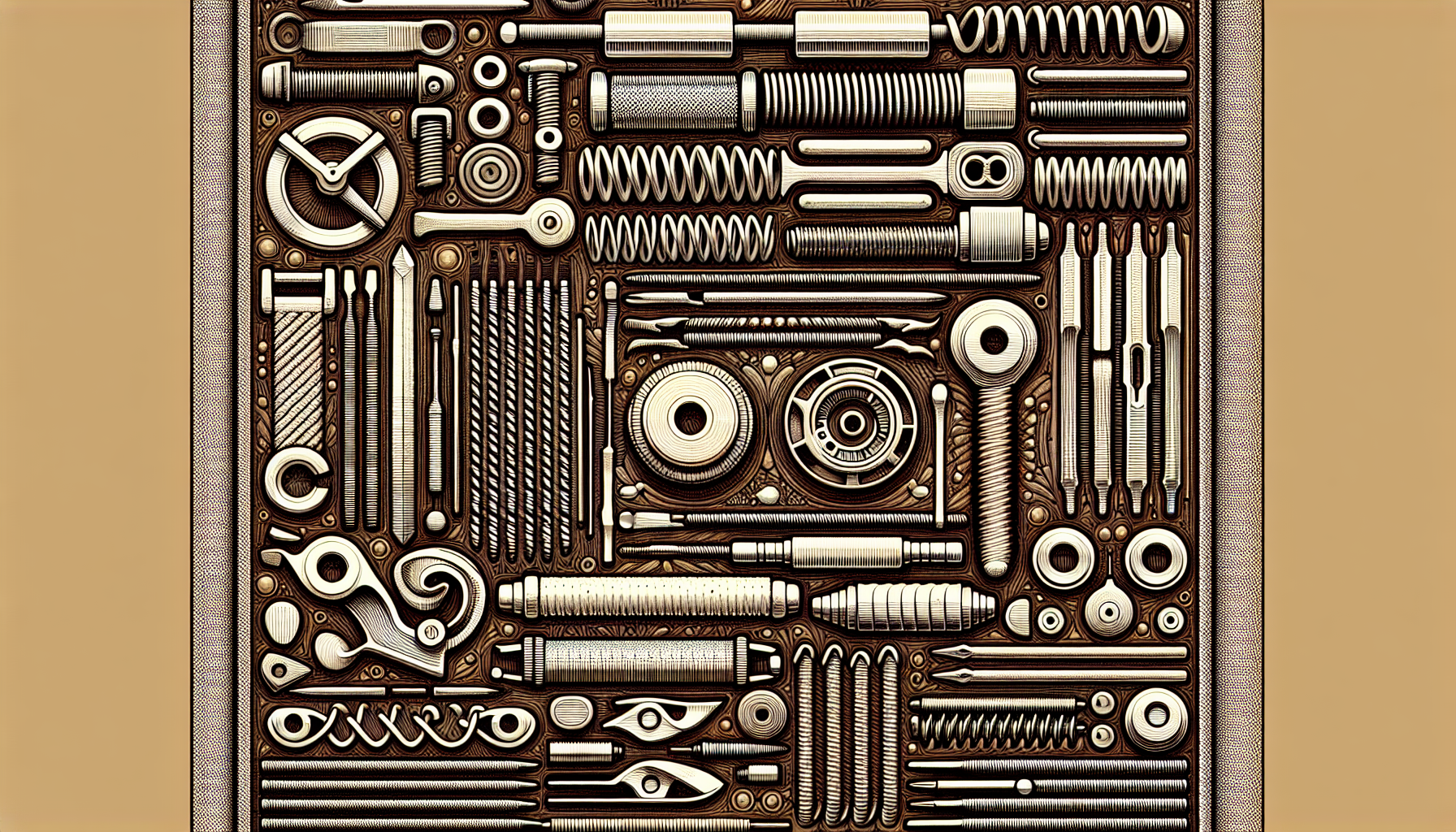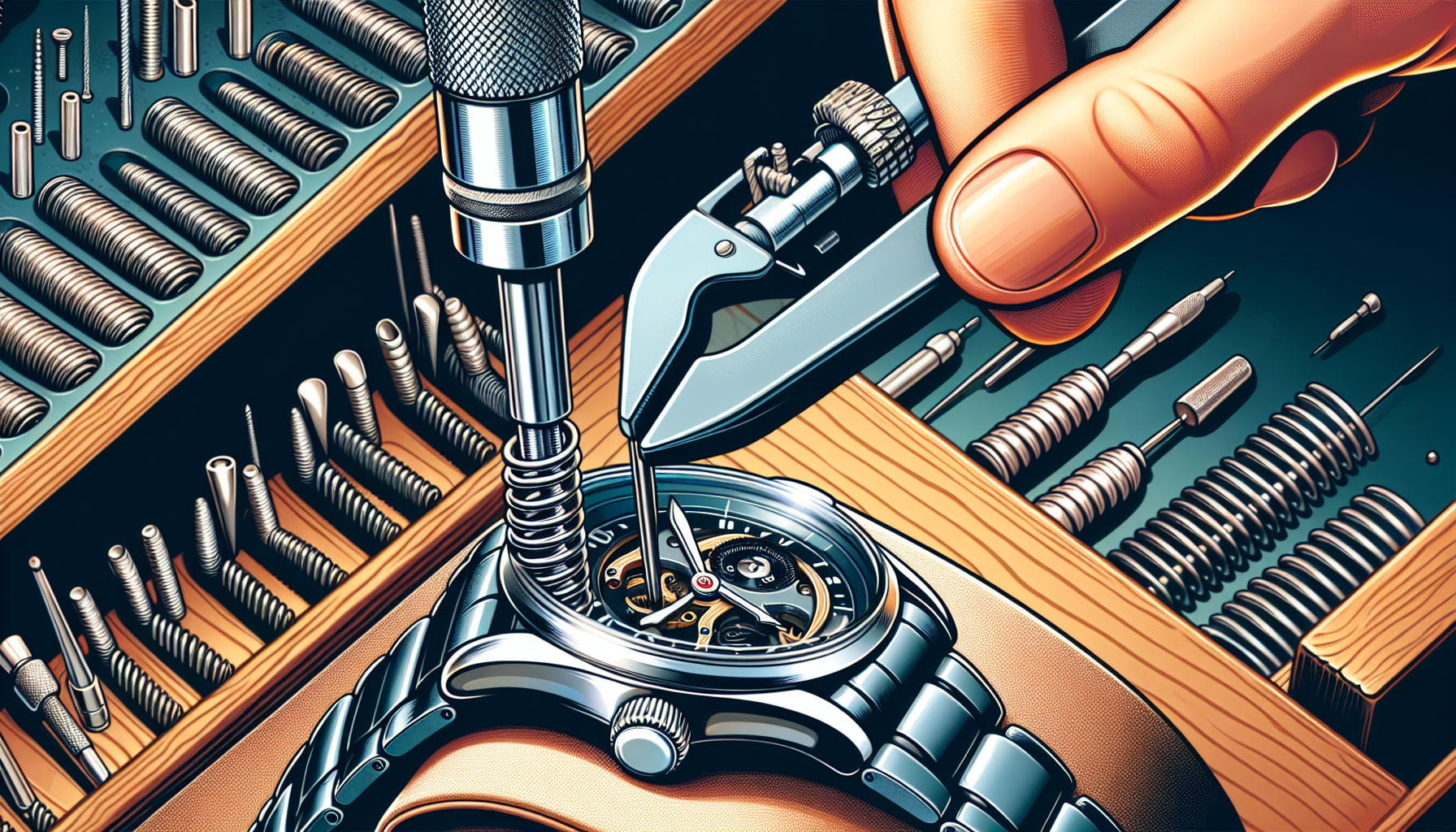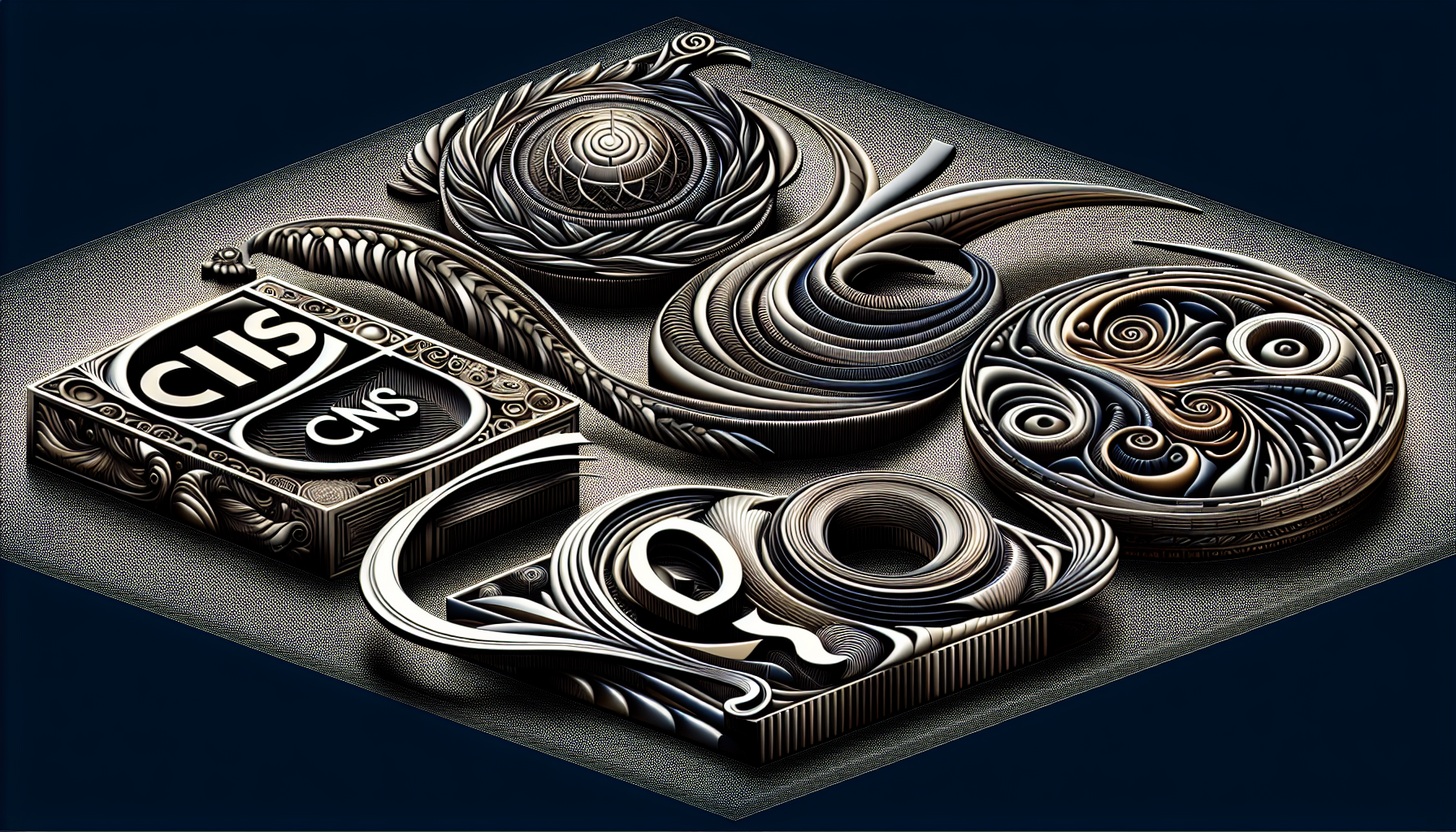Top Spring Bars for Secure and Effortless Watch Strap Replacement
Understanding spring bars is essential for any watch owner wanting to ensure their watch strap stays secure. This guide demystifies spring bars, detailing types, sizes, and how to replace them. With practical advice and step-by-step instructions, you’ll confidently select and handle spring bars for your watch, maintaining both function and appearance.
Key Takeaways
-
Spring bars are crucial for watch strap security, with different types catering to various strap materials and the size of the bar must match the lug size of the watch.
-
Quality spring bar tools, specifically designed for watch strap replacement, are essential for safe and efficient spring bar manipulation, highlighting the Bergeon 6767-F’s prized features.
-
High-quality and durable spring bars from renowned brands such as CNS, Seiko, and Omega offer a variety of options, while generic spring bars are a cost-effective alternative that may require more frequent maintenance.
Understanding Spring Bars

A spring bar may be small in size, but plays a significant role in securing your watch strap to the timepiece. It forms a vital part of your watch, providing stability to keep it in place on your wrist. But how does it achieve this? Inside the spring bar, there’s a small internal spring. When this spring releases its tension, it helps hold the bracelet in its proper place. Giving your watch the stability it needs to stay on your wrist.
Imagine the horror of your precious watch falling off your wrist, all because of a faulty spring bar. Sounds terrifying, right? This is why watch enthusiasts emphasize the importance of selecting high-quality spring bars. A poor-quality spring bar can indeed lead to the loss or even damage to your watch.
Types of Spring Bars
Much like watches, spring bars are available in a multitude of types, each designed to suit different watch strap materials, forming a diverse collection. Two of the most common types you’ll come across are Double Shoulder and Double Flange. These types of spring bars are widely used for leather, rubber, and metal bracelets, making them quite versatile.
Interestingly, Double flange spring bars are a favorite among many due to their ease of changing. This comes in handy, especially when dealing with watches with non-quick release bars. So, if you’re all about convenience, consider choosing Double flange spring bars for your timepiece.
Sizes and Measurements
Securing the right fit for your watch strap is paramount, which is determined by the size of your spring bar. The lug size of a watch, measured as the distance between the lugs, determines the correct size of the spring bar for your strap or bracelet.
Spring bars come in a variety of thicknesses, with the standard thickness being 1.80 mm for most straps and bracelets. However, special dimensions may be needed for specific designs. And if standard sizes do not fit due to precisely drilled holes, you can opt for slightly shorter spring bars or those with greater compressibility.
Essential Watch Tools for Spring Bar Replacement

Equipping yourself with the right tools can simplify the process of replacing spring bars. One such tool that you’ll find indispensable is a spring bar tool. This tool is specifically designed to facilitate the removal and installation of spring bars, making it crucial for replacing watch bands and adjusting bracelets.
Although a spring bar tool is highly advisable for altering watch straps, some straps or bracelets can be interchanged even without one. However, having this tool in your watch maintenance kit certainly simplifies the process and reduces the risk of damaging your watch or its strap.
Spring Bar Tool Features
Owning a spring bar tool isn’t enough; it’s critical that your tool has the right features. For instance, the forked end tool and the pusher-style tool are designed to facilitate easy manipulation of spring bars during watch strap replacement.
Some spring bar tools provide you with the best of both worlds - a small fork end on one side and a pin pusher on the other. This versatility allows you to work on different watch designs with ease. Plus, some tools feature reversible tips with a forked end and a flathead screwdriver for multiple tasks in watch maintenance.
And let’s not forget about the features of the Bergeon 6767-F:
-
Knurled handle that ensures a secure grip, enhancing ease of use and maneuverability
-
High-quality steel body and hardened steel tips, known for their durability
-
Availability of replacement tips
These features make the Bergeon 6767-F a top choice for watchmakers and enthusiasts.
Tips for Using Watch Tools Safely
Proper usage of watch tools is equally important as possessing the right ones. Proper usage not only prevents damage to the watch but also avoids potential injuries. One such watch tool technique is applying counter pressure while sliding spring bars. This simple but effective technique can save your watch from unwanted damages.
Another tip to remember is to press the spring bar through the edge of the strap carefully to release it from the watch lug. This ensures that the watch is not damaged in the process. So, the next time you’re replacing a spring bar, remember these safety tips.
Top Spring Bar Brands and Products

Ensuring your watch’s security hinges on the selection of the appropriate spring bar. But with so many options out there, how do you know which one to pick? Well, some brands stand out in the crowd for their high-quality and durable spring bars. CNS and Seiko, for instance, are highly regarded in the spring bar world, with products like the CNS 316L Stainless Steel Spring Bars known for their corrosion resistance and strength.
Omega spring bars, on the other hand, are often the preferred choice for luxury watches due to their robustness and high quality. And if you’re a stickler for originality, OEM spring bars might be your best bet. These are tailor-made to fit specific models of watches, potentially offering greater reliability.
Bergeon Spring Bars
Bergeon spring bars are a class apart. Their high quality and durability make them a popular choice for secure watch strap replacement. So, what makes them so special? For starters, these spring bars are a product of Bergeon’s strong manufacturing standards, recognized for crafting precise and sturdy components in the watch industry.
Whether you’re a watch aficionado or a professional, Bergeon is a name that you can trust for high-quality spring bars. The brand has earned a reputation in the watch industry for its high-quality products that don’t compromise on durability and precision.
Seiko Spring Bars
When it comes to spring bars, Seiko is another brand that shines. Seiko dive watches, for instance, utilize oversized spring bars known as ‘fat bars,’ which are specifically designed for added resilience and security.
Apart from ‘fat bars,’ Seiko also offers a unique variation called ‘skinny fat’ spring bars. These bars support aftermarket straps, providing a combination of normal-diameter barrels with oversized tips to fit Seiko’s lug holes. However, shoulderless variants of Seiko spring bars can pose compatibility issues with watches having non-drilled lugs.
Generic Spring Bars
If you’re on a budget and looking for a more affordable option, then generic spring bars might be your go-to. These spring bars are often available at lower prices than those from top brands like Omega or Seiko. However, they may not offer the same level of quality and durability as their in-stock counterparts.
Interestingly, certain strap designs can enhance the durability of generic spring bars. For instance, rubber watch straps with block integration provide increased support for generic spring bars, leading to less maintenance and a longer lifespan. However, NATO straps without block integration put more strain on generic spring bars and the watchband, potentially leading to quicker wear and more frequent replacements.
How to Replace and Adjust Watch Straps with Spring Bars

The task of replacing and adjusting watch straps with spring bars might appear intimidating at first. However, with the right tools and a step-by-step guide, it becomes easily manageable. Whether you’re a seasoned watch wearer or a newbie, understanding the process will save you time and potential damage to your watch.
So, how do you go about it? It starts with removing the old strap, followed by installing a new one, and finally adjusting the fit for your comfort. And the best part? You don’t need to be a watch expert to do this. All you need is a little patience and the right guidance.
Removing Watch Straps
The process of removing watch straps begins by accessing the spring bar. For this, position the watch to reveal its underside. Then, using your spring bar tool, position it at a precise 90-degree angle to the watch lugs. This positioning is crucial for an effective and safe removal.
Next, to remove your watch strap, follow these steps:
-
Insert the spring bar tool between the watch lugs and the spring bar.
-
Press inward to compress the spring bar.
-
Release the spring bar from the lug holes. Voila! You’ve successfully removed your watch strap. It’s as simple as that.
Installing New Straps
Now that you’ve removed the old strap, it’s time to install a new one. This might seem a bit tricky, but with a little practice, it’s a breeze. Start by positioning one end of the spring bar into the lug hole. Now, use your spring bar tool to compress the other end and guide it into the lug hole until it clicks securely into place.
Sounds easy, right? But remember, practice makes perfect. So, don’t be disheartened if you don’t get it right the first time. With a bit of patience, you’ll be able to replace your watch straps in no time.
Adjusting Strap Fit
After installing the new strap, it’s important to ensure a comfortable fit. This can be achieved by measuring your wrist size and selecting a watch strap width that balances with your wrist size and the watch case size. Remember, strap proportionality affects both appearance and comfort.
To adjust the tightness or looseness of the watch strap, you can change to a different hole on the strap for buckled straps, or adjust the clasp on metal bracelets. And there you have it - a perfectly fitted watch strap that’s comfortable and secure.
Common Spring Bar Issues and Solutions

Just like any other component, spring bars too can experience issues. From breakage and loose straps to difficult removal, these problems can be quite a pain. But don’t worry, with the right tools and techniques, you can easily resolve these issues.
So, what can you do when you encounter these problems? Let’s explore some solutions that can help you effectively deal with common spring bar issues.
Replacing Broken or Damaged Spring Bars
Dealing with broken or damaged spring bars can be quite troublesome. But with the right approach, replacing them is no big deal. Start by removing the compromised spring bar. If you can, submerge the watch case in a solution of alum and water. This helps dissolve the steel without affecting other metals.
If the alum solution method is unsuccessful, carefully use specialized drilling tools to remove the broken spring bar without damaging the watch case. In extreme cases, you can even use a fine #000 blade on a jeweler’s saw to cut an oversized or stubbornly fixed spring bar between the bracelet and case lug. Once the broken spring bar is safely removed, you can install a replacement bar by aligning it with the lug holes, compressing it, and ensuring it snaps securely into place.
Ensuring a Secure Strap Fit
Maintaining a secure strap fit is vital for upholding the integrity of your watch. This requires regular maintenance and inspection of the spring bars. If the spring bars do not engage properly with the lug holes, you can try filing burrs inside the lug holes or using a tool to steady the bar while it is being positioned.
Remember, routine checks of the spring bars can help ensure the watch strap remains tightly and securely fitted over time. So, make it a habit to check your spring bars regularly to avoid any unpleasant surprises.
Troubleshooting Difficult Spring Bar Removal
Struggling with spring bars that are tough to remove can truly test your patience. But with the right techniques, you can overcome this challenge. You can try the following methods to loosen the stuck spring bar:
-
Boiling
-
Ultrasonic cleaning
-
Using a penetrating oil
-
Using a rust converter
-
Heat treatment
If a spring bar is jammed, a small prying tool can be used to apply pressure and bend it away from the case, followed by wiggling it out with tweezers or pliers. However, be careful when using a spring bar remover tool on a stuck bar. Excessive force can break the tool, so take your time and be patient.
Summary
By now, you should have a clear understanding of spring bars - from their basic understanding to their types, sizes, and essential tools required for their replacement. We’ve also reviewed some of the top spring bar brands and products, discussed how to replace and adjust watch straps with spring bars, and provided solutions for some common spring bar issues.
In the world of horology, every tiny component holds its significance, and spring bars are no exception. So, the next time you wear your watch or get a new watch strap, remember the humble spring bars that keep your timepiece secure on your wrist. After all, it’s these small components that make a big difference!
Frequently Asked Questions
How do I know what size spring bar for my watch?
To find the right size spring bar for your watch, measure the space between the lugs using a ruler or calipers. This measurement will give you the accurate length of the spring bar needed.
What are curved spring bars for?
Curved spring bars are used to increase the space between the spring bars and the watch case, allowing for a better fit when the space between the watch and watch band is narrow.
Are all watch spring bars the same?
No, not all watch spring bars are the same. While most watches use single- or double-flanged spring bars, there are also specialized spring bars made for different watches.
What is a spring bar?
A spring bar is a small piece of metal used to hold watch straps in place, typically coming in pairs but sometimes in sets of four or six.
What are the common types of spring bars?
The two common types of spring bars are Double Shoulder and Double Flange, which are widely used for leather, rubber, and metal bracelets.




